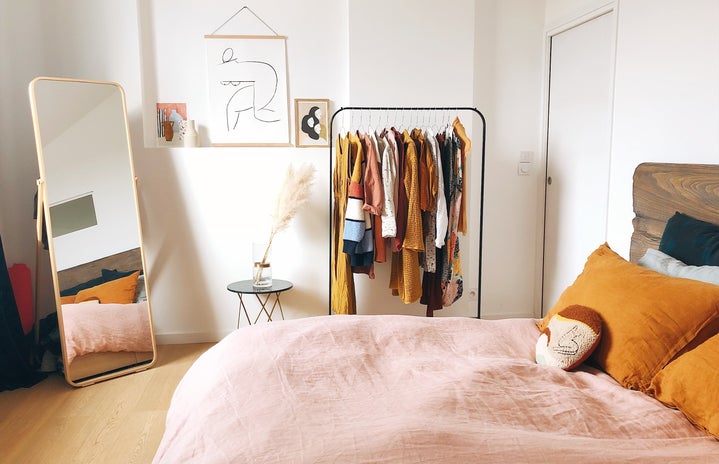As the COVID-19 pandemic reduced all of our social interactions to family dinners and the occasional socially distanced walk or picnic, our need for constant new outfits also diminished. With our homes becoming our new instagram staple rather than the classic outfit pictures, the need for new-ness and liveliness in our homeware became apparent.
Fast fashion retailers like Pretty Little Thing, BooHoo and Missguided jumped on this opportunity, all releasing homeware lines within 6 months of each other at the end of 2020.
Clothing hauls quickly became homeware hauls and the rise of the ‘lockdown aesthetic’, particularly on TikTok, birthed all things chequered, bright and covered in expanding foam, all of which has already gone out of style in less than a year, and is bound to end up in landfills before the new trend cycle appears.
The rise in cheap, readily available furniture has also grown along with rising house prices. With fast fashion retailers aimed at teenagers and young adults, most of which are just starting to move out and rent their own apartments, these brands have taken the opportunity to capitalise on a younger generation’s need for cheaper alternatives to furniture and homeware. And since rent prices have reached an all time high since the pandemic, affordable homeware seems like the perfect way to decorate on a budget.
However this vicious cycle of buying cheap decorations only to throw them away a couple of months later when they’re out of style worryingly mirrors the cycle that has turned the fashion industry into the world’s second largest pollutant. And as the newfound homeware trends seem to mirror the fast fashion trends of the time, the cycle of excessive waste and overconsumption has become apparent in homeware too, buying new mirrors, lamps and rugs every week has become as normalised and accessible as buying new clothes, and considering the shift towards more sustainable clothes shopping, it seems as though fast fashion retailers have found a new way to profit off of people’s need for constant new material goods. But will this alarming rise in so-called ‘Fast homeware’ reach the magnitude of the fast fashion industry, and more importantly will it have the same detrimental effects on the environment as its clothing counterpart?


